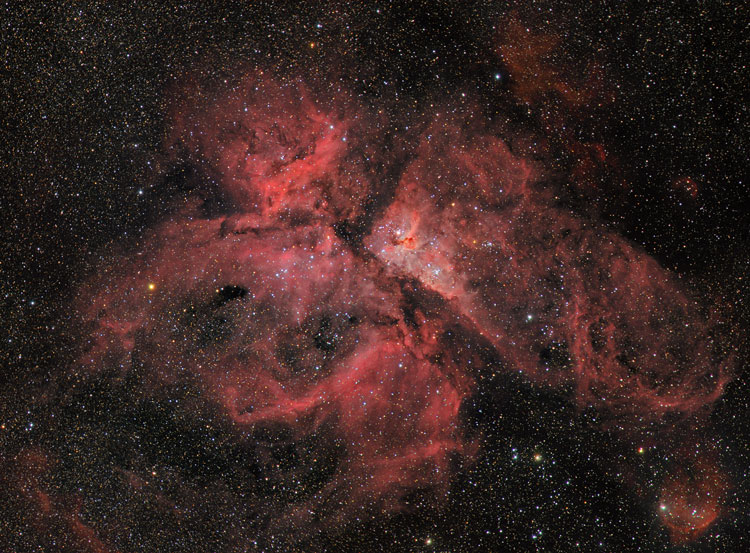
About this Image |
|
|
The super massive star Eta Carinae is embedded in a huge gas and dust cloud. It is situated approx. 9,000 light-years away.
Eta Carinae suffered a giant outburst in the year 1841, when it became one of the brightest stars in the southern sky.
Though the star released as much visible light as a supernova explosion, it survived the outburst.
|
|
|
| Optics |
105mm TMB refractor with flattener at f/6.5 |
| Mount | AP-400 GEM |
| Camera | SBIG STL-11000M at -25C, internal filter wheel |
| Filters | Astronomik H-alpha (15 nm) + LRGB |
| Date |
LRGB: Aug 07, 2004.
Ha: Aug 07, 2004 |
| Location | Hakos/Namibia |
| Sky Conditions | mag 6.5, high transparency, temperature 10 C, |
| Exposure |
Ha = 40 minutes (10-minute sub-exposures), LRGB= 15:15:15:15 min (5-minute sub-exposures) all 1x1. |
| Processing |
Image aquisition in Maxim DL 4.0; Image calibration, aligning, mean stacking, DDP and color synthesis in ImagesPlus; Photoshop: H-alpha blended to red and L channel; size 20/40 %; |